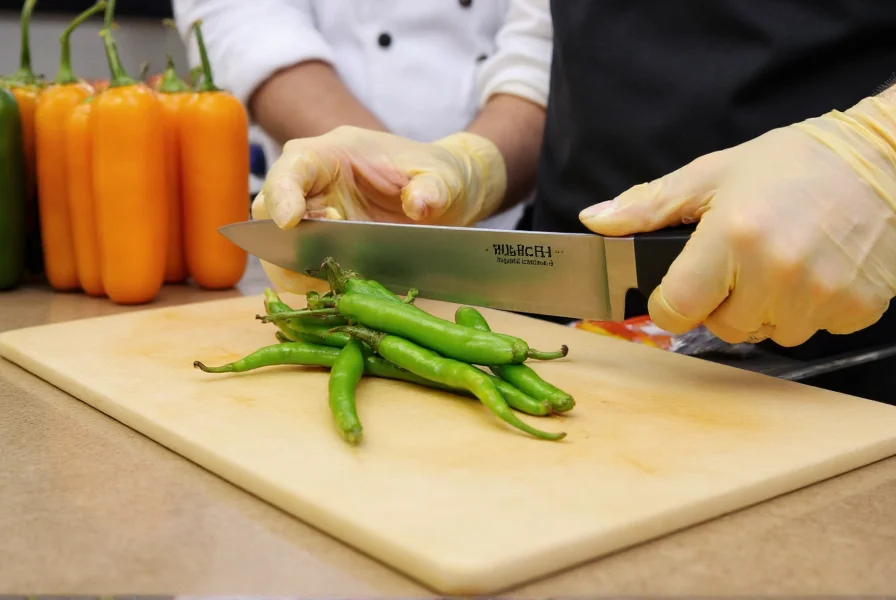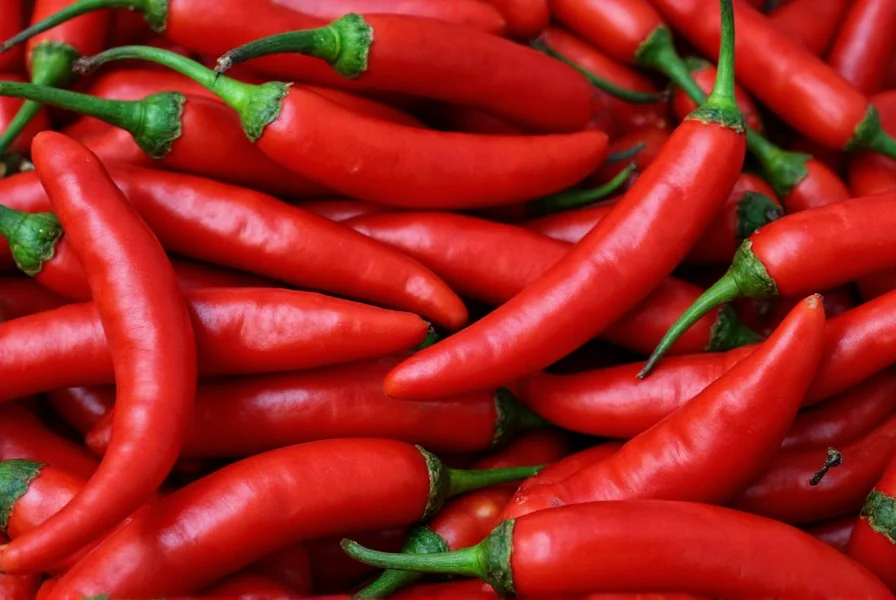Understanding the serrano chili hotness scale is essential for home cooks and culinary professionals who want to use these vibrant peppers effectively. Native to Mexico's mountainous regions, serranos offer a bright, grassy flavor with a noticeable kick that can elevate salsas, sauces, and marinades when used appropriately.
Understanding the Serrano Chili Heat Measurement
The Scoville scale measures chili pepper heat by determining capsaicin concentration—the compound responsible for that fiery sensation. Serrano peppers consistently register between 10,000 and 23,000 Scoville Heat Units, though specific heat levels can vary based on growing conditions, maturity, and even individual pepper characteristics.
What makes serranos particularly interesting is their heat consistency compared to some other chilies. Unlike jalapeños, which can sometimes surprise you with unexpected heat spikes, serranos generally deliver a more predictable burn level within their established range. This predictability makes them valuable for recipe development where consistent heat matters.
| Chili Pepper | Scoville Heat Units | Heat Comparison to Serrano |
|---|---|---|
| Serrano | 10,000-23,000 SHU | Baseline |
| Jalapeño | 2,500-8,000 SHU | 3-5x milder |
| Cayenne | 30,000-50,000 SHU | 1.5-2x hotter |
| Habanero | 100,000-350,000 SHU | 5-15x hotter |
| Poblano | 1,000-2,000 SHU | 5-10x milder |
Factors That Influence Serrano Pepper Heat Levels
Several variables affect where an individual serrano pepper falls within the serrano chili hotness scale:
- Maturity: Green serranos (less mature) tend to be milder than red, orange, or yellow varieties that have fully ripened
- Growing conditions: Stressors like limited water or nutrient deficiencies can increase capsaicin production
- Part of the pepper: The placenta (white ribs) contains the highest concentration of capsaicin
- Preparation method: Removing seeds and membranes significantly reduces heat
Interestingly, serranos grown at higher elevations often develop more intense heat as a natural defense mechanism against pests. This geographical variation explains why serranos from different regions might register differently on the serrano pepper scoville units range.

Serrano vs Jalapeño Heat Comparison
One of the most common questions about serrano chili hotness scale relates to how they compare to the more familiar jalapeño. Serranos typically run 2-5 times hotter than jalapeños, with serranos averaging around 16,000 SHU compared to jalapeños' 5,000 SHU.
The heat profile differs too—serranos deliver a sharper, more immediate burn that hits quickly and fades relatively fast, while jalapeños produce a slower-building, longer-lasting warmth. This distinction matters when planning dishes where timing of heat sensation affects the eating experience.
When substituting serranos for jalapeños in recipes, use approximately one-third to one-half the amount to achieve similar heat levels. This serrano vs jalapeño heat comparison is crucial for recipe adaptation without overwhelming diners.
Culinary Applications Based on Heat Level
Understanding the serrano chili hotness scale directly informs how to use these peppers effectively in cooking:
- Raw applications: Finely diced in pico de gallo or fresh salsas (use sparingly)
- Cooked dishes: Excellent in simmered sauces where heat distributes evenly
- Infusions: Create spicy oils or vinegars with controlled heat extraction
- Garnishes: Thin slices add visual appeal and measured heat to finished dishes
Professional chefs often roast serranos before use to mellow their heat slightly while enhancing their natural grassy, vegetal flavors. This technique makes the serrano pepper scoville units range more manageable in complex dishes.

Safety Considerations When Handling Serranos
Given their position on the serrano chili hotness scale, proper handling is essential:
- Always wear gloves when cutting serranos to prevent capsaicin transfer
- Avoid touching your face, especially eyes, during preparation
- Wash hands thoroughly with soap and water after handling
- Use separate cutting boards for hot peppers to prevent cross-contamination
If you experience skin irritation from serranos, apply milk or yogurt to the affected area—the casein helps neutralize capsaicin. Never use water alone, as it can spread the oil and worsen the burning sensation.
Storing and Preserving Serrano Heat
Proper storage maintains consistent heat levels in serranos:
- Refrigerate fresh serranos in a paper bag for up to 3 weeks
- Freeze whole peppers for up to 6 months (heat remains stable)
- Dry serranos for concentrated heat in powders or flakes
- Pickle serranos to mellow heat while preserving flavor
Drying serranos concentrates their heat, potentially pushing them toward the upper end of the serrano pepper scoville units range. When rehydrating dried serranos, expect more intense heat than fresh counterparts.
Frequently Asked Questions
How does the serrano chili hotness compare to cayenne pepper?
Serrano peppers (10,000-23,000 SHU) are noticeably milder than cayenne peppers (30,000-50,000 SHU). Cayenne typically runs about 1.5-2 times hotter than the average serrano. While serranos provide a sharp, immediate heat that fades relatively quickly, cayenne delivers a more sustained burn that builds gradually.
Are red serrano peppers hotter than green ones?
Yes, red serrano peppers are generally hotter than green ones. As serranos mature and change color from green to red, orange, or yellow, their capsaicin concentration typically increases. Red serranos often register toward the upper end of the serrano chili hotness scale (15,000-23,000 SHU) compared to green serranos (10,000-16,000 SHU).
Can I substitute serrano peppers for jalapeños in recipes?
Yes, but use approximately one-third to one-half the amount of serranos compared to jalapeños due to the serrano vs jalapeño heat comparison. Serranos run 2-5 times hotter than jalapeños. For raw applications like salsas, start with even less serrano and adjust to taste. Remember that serranos have a brighter, grassier flavor profile that differs slightly from jalapeños.
Why do some serrano peppers seem hotter than others?
Variations in serrano pepper heat occur due to growing conditions, maturity level, and individual plant genetics. Environmental stressors like limited water or nutrient deficiencies can increase capsaicin production. The specific part of the pepper also matters—the placenta (white ribs) contains the highest concentration of capsaicin. This natural variation explains why serranos from the same batch might register differently on the serrano pepper scoville units range.
How can I reduce the heat of serrano peppers in cooking?
To reduce serrano heat, remove all seeds and white membranes (placenta), which contain most capsaicin. Soaking sliced peppers in salt water or milk for 15-30 minutes can also draw out some heat. Cooking methods matter—roasting or simmering serranos mellow their heat while preserving flavor. For significant heat reduction, consider using just a small portion of one serrano rather than a whole pepper when following recipes that specify serrano chili hotness scale measurements.











 浙公网安备
33010002000092号
浙公网安备
33010002000092号 浙B2-20120091-4
浙B2-20120091-4